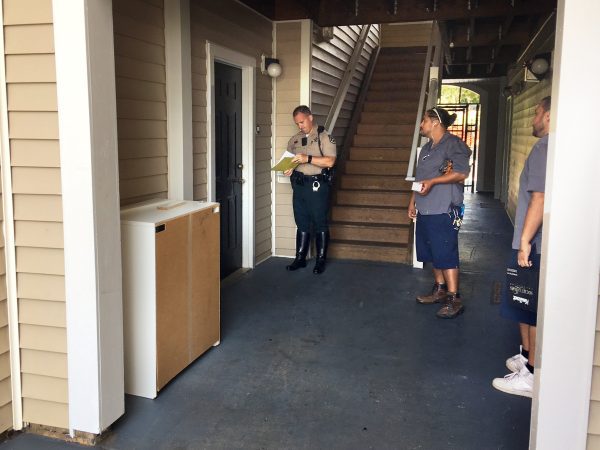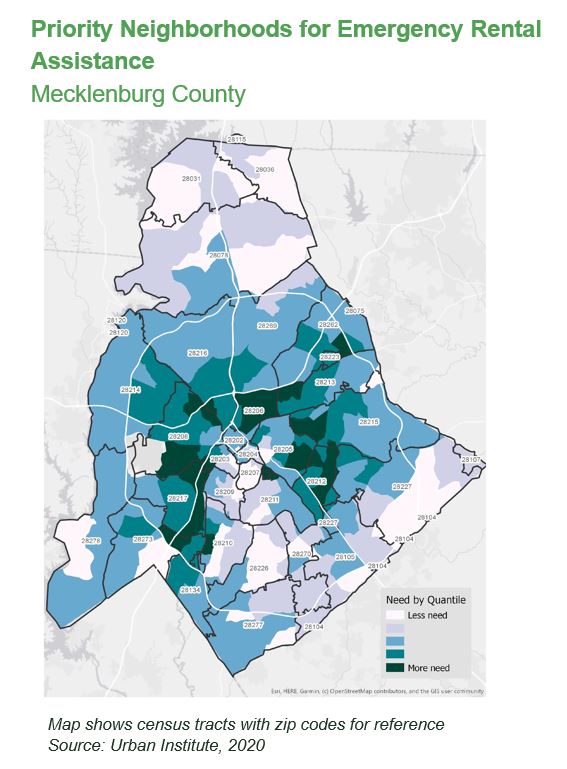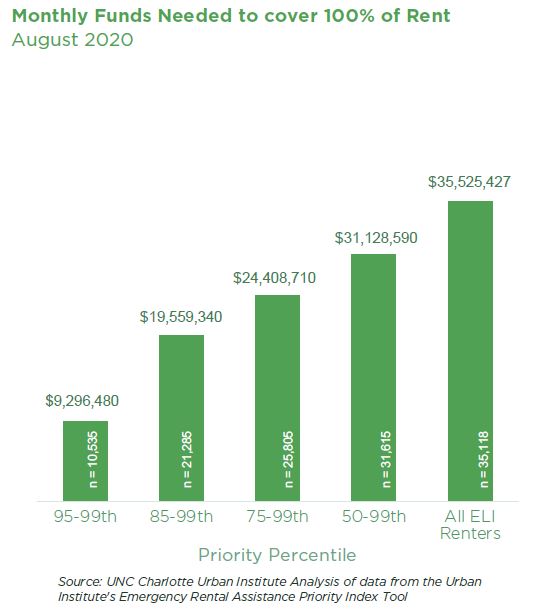Five key findings about the impact of COVID-19 on local renters and prioritizing rental assistance

COVID-19 has had an immediate and potentially lasting impact on the housing stability of low-income renters in Charlotte and the nation. Although the Centers for Disease Control and Prevention recently announced a federal eviction moratorium through the end of 2020, missed rent is not being forgiven.
Renters need assistance to avoid often insurmountable back rents and looming evictions once moratoriums expire. The pandemic has disproportionately impacted Black and Latinx people, who are both more likely to to experience death and serious complications from the virus and also more likely to to hold jobs lost during the pandemic or jobs that put them in harm’s way of COVID-19. In the Charlotte community, as in much of the country, Black and Latinx households are also more likely to be cost burdened, meaning they pay more than 30% of their household incomes on housing costs.
Governments, foundations, non-profits, and others have provided support to keep residents in their homes and are moving quickly to find additional ways to address the immense and ongoing needs that have been introduced and exasperated by the COVID-19 pandemic.
Read the full report here
To assist our partners in supporting renters, the UNC Charlotte Urban Institute prepared a brief report that synthesizes information on estimates of need and prioritization of resources for renters in Charlotte-Mecklenburg, and the cost associated with filling this need. This project used data tools developed by the Urban Institute in Washington, D.C. (no affiliation), which provides data resources on jobs lost due to COVID-19 and rental assistance prioritization index.
This brief report documents the industries hit hardest by COVID-related job losses, neighborhoods that have the highest need for rental assistance, and estimates of the costs associated with providing rental assistance for extremely low income renters in our community. For those interested in viewing and working with the raw data used to develop the estimates included in the report, the data file can also be downloaded.
Click here to download the raw data (Excel file)
Key Findings:
- As of Aug. 7, Mecklenburg County has lost an estimated 24,256 low-income jobs to COVID-19. Low-income jobs are defined as jobs with annual earnings below $40,000. The majority of these jobs are in the accommodations and food service; arts, entertainment, and recreation; and retail trade industries. Estimates suggest that 60-90% of the workers in the industries hardest hit by job loss were already housing cost-burdened prior to COVID-19.

- Mecklenburg County is estimated to have 35,118 Extremely Low-Income renters. Extremely Low-Income is defined as renters with incomes at or below 30% of the area median income (AMI). 10,535 of these renter households live in the 29 Census Tracts that have been identified as having the greatest need and thus highest prioritization of emergency rental assistance.
- Several compounding factors contribute to prioritization of a Census Tract, including the share of People of Color, share of residents living in poverty, and the number of low-income jobs lost to COVID-19. These factors, among others disproportionately contribute to eviction, homelessness, and COVID-19 economic and health risks. The factors speak to the legacy of systemic and structural racism in housing access, wealth accumulation, employment, criminal justice, and other systems.
- The households with some of the lowest median rents in Mecklenburg County are also the households in the most need of emergency rental assistance, and the highest need is concentrated in a small number of Census Tracts.
- The estimated cost to cover the monthly rent of all the Extremely Low-Income renters in the areas with the highest priority for assistance (95th-99th percentiles) ranges from $9.3 million (covering 100% of rent) to $2.8 million (covering 30% of rent) per month.

It is clear that additional and ongoing assistance is needed to maintain housing stability during this pandemic. The level of need even among the priority percentiles is immense. This brief report only examined the need for Extremely Low-Income renters. However, 92% of households earning between $20,000-$34,999 were cost-burdened and 61% of those earning between $35,000-$49,999 were also cost-burdened prior to COVID-19. While the prioritization index identifies those at most risk of housing instability, the problem of housing affordability, exacerbated by the pandemic, extends to moderate-income households.These data offer a way to frame the question of how to prioritize that assistance and what different options would ultimately cost